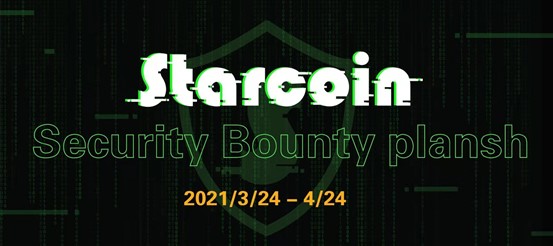Recently, the public blockchain track has once again become the focus of the crypto market. The performance of public blockchain project tokens such as Polkadot, Cosmos, Algorand, etc. is amazing in the secondary market with over 10-fold increase since last year. The “Ethereum Killer” story seems to have received more recognition.
Starcoin, a brand new public blockchain project, which is positioned as a next-generation layered smart contract and distributed financial network, is catching more attention in the public chain field. The project team has announced that the mainnet is coming soon after the launch of a “Security Bounty Program“. The project was developed by the Westar Lab, and the development team has a very impressive background, including Tim Yang, one of the former executives of Weibo, and Jolestar, a well-known architect, etc. According to people familiar with the matter, several industry figures such as Xingkong (CEO of Bixin.com) also participated in the early investment of the project.
Starcoin is in the beta phase before the mainnet launch. On March 24, the public blockchain also officially launched a one-month “Starcoin Security Bounty Program“, planning to attract external developers to test potential loopholes of the Starcoin blockchain beta version with high bonuses up to 5,000 USDT plus 5,000 STC. By submitting a valid BUG on the Github page the developer can get the Starcoin miner freely with which Starcoin mainnet coins can be mined after the launch.
Why does Starcoin still aim at the DeFi field and try to compete with Ethereum? Starcoin’s confidence may mainly come from four design ideas and their combination as follows.
Firstly, compared to the current PoS consensus mechanism used by most public blockchains – even Ethereum plans to switch to PoS – Starcoin still adheres to the PoW consensus mechanism with the highest degree of decentralization, through the Uncle Block mechanism and on the basis of evaluating the network congestion with uncle block rate within a difficulty alteration cycle, the block size and block generation speed are dynamically adjusted, so as to improve the throughput of the network without affecting the network security.
Meanwhile, Starcoin counts all gas consumption in a difficulty alteration cycle, and dynamically adjusts the gas limit in conjunction with the block generation speed. When the network is congested, the system can increase the gas limit of the block, and vice versa, which can avoid gas fees rising sharply in extreme cases, thereby providing users with a fast transaction experience.
Secondly, the project uses the MOVE programming language developed by Facebook specifically for Libra, which is also a development language specifically designed for digital assets. It has also been optimized for the defects of the Ethereum programming language Solidity, such as not supporting formal verification, etc., in which many settings are not very friendly to developers.
MOVE language supports formal verification with stricter logical constraints. The compiler can check most of the resource usage errors before the code is deployed. It not only supports smart contracts, but also supports custom resource types with semantics inspired by linear logic.
Thirdly, Starcoin has designed a flexible on-chain governance mechanism. Starcoin can use its on-chain governance strategy to implement decentralized governance over the governance parameters and mechanisms of the system itself, achieving a higher degree of decentralization than other public blockchains. Starcoin users will need to stake their governance token STC to participate in voting governance.
Fourthly, the project adopts a state storage mechanism with a controllable capacity to effectively alleviate the state explosion problem faced by Ethereum. According to the statistics of etherscan.io, currently the size of stored data in the most popular Ethereum full node GETH has reached 671.29 GB, while it was only 270.59 GB in the same period last year.
For this problem, Starcoin’s solution is to abstract state-related information into resources, divided into Resource and Code, where Resource is used to store the user’s digital asset-related information, and Code is used to store the user’s contract script.
As the mainnet and its Security Bounty Program enter the start-up phase, Starcoin will also further announce the progress of the specific DeFi layout. This is also the most difficult nut for all public blockchain projects to crack. If its strategy is appropriate, Starcoin will have the opportunity to make a breakthrough in this area and form a barrier to competition, but this remains to be seen.
As mentioned earlier, there are still great variables in the current public blockchain landscape, and more technical solutions are needed to explore and practice in order to truly promote the large-scale commercial application of blockchain technology. However, Starcoin is getting increasingly closer to this goal.























